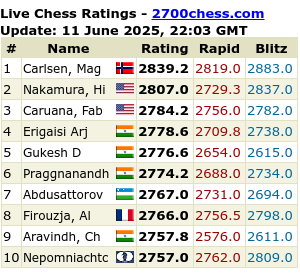During an ordination, someone must stand up in front of the ordaining bishop and attest that seminarians are properly formed and educated and suitable for ordination.
However, seminarians of the Latin Church are not being trained in the whole of the Roman Rite. According to the Church’s law, the Roman Rite has two forms. How many seminaries are training men also in the Extraordinary Form with adequate training, real training… not just an occasional Mass they get to watch. Furthermore, the Code of Canon Law requires that all seminarians be very well-trained in Latin (can. 249). Is that happening? Universae Ecclesiae reiterated this point. I also know of a document from the Congregation for Catholic Education which requires that there be a Patristic Theology component in the curriculum, not just the occasional reference in history or theology courses.
I think it is great, therefore, when – just as some of us did back in the day – seminarians are learning to row the boat all on their own.
From a seminarian:
I am wondering if you could recommend some sources for anyone
interested in learning how to celebrate the Traditional Latin Mass. I
am a year and a half away from ordination to the priesthood and would like to be able to offer both forms down the road. Thanks and God Bless.
I would contact the Fraternity of St. Peter. They have a very good instructional DVD.
Also, the Canons of St. John Cantius in Chicago have a great page, online tutorials.
I know that both groups host workshops. Also, in England there are occasional workshops for seminarians and priests.




























Don’t forget the free Priest’s Mass Kit offered by the SSPX’s USA District (http://sspx.org/for_priests.htm#free_mass_kit) – it’s one of the best instructionals out there and it’s free!
Your encouragement is necessary, Father Z and your rant is milder than mine would be. These young men in some places must still learn the TLM sub rosa. Here, in Malta, the diocese is losing one of the best and brightest because the powers that be will not accept him as his is open about his love of the Latin Mass. He is going to the FSSPS.
I suggest obtaining and reading such useful manuals, such as “The Celebration of Mass” by Canon J.B. O’Connell, and/or “Ceremonies of the Roman Rite Described” by Adrian Fortescue. Both have detailed step-by-step instructions of different elements of the Mass.
I would suggest also, as Father has said, contact priests in the area who say the Extraordinary Form. I can imagine most would be more than willing to spend some time with seminarians to teach them such a beautiful form of the Mass. No text can ever compare to actually practicing and learning to say the Mass the way it has been done for centuries.
Fr, I understand that in view of the concerns expressed by the Council Fathers, Pope Paul VI set up a commission of three cardinals to examine the question of whether the particular Churches should be allowed to communicate with the dicasteries of the Roman Curia in languages other than Latin. It is my understanding that Scotland’s William Theodore Cardinal Heard was one of the three. I believe that Cardinal Roberti MAY have been one of the others.
The problem is, I have never been able to locate anything about the report of the commission or anything about what Pope Paul VI decided, although it is obvious that they recommended, and the Pope accepted, that it was unreasonable/unadvisable to insist on the local Churches communicating in Latin.
I wondered if, bearing in mind your expertise in the Latin, you knew anything about this.
PS: Cardinal Heard held an honours degree in Classical Moderations and Jurisprudence from Oxford (1907). Basically, this was a BA (later automatically upgraded to MA, as is the Oxbridge custom) in Greek and Latin with Law (non-Oxbridge Universities awarded an “MA, LlB”). His Eminence was a City of London solicitor specialising in the Licensed Trade/Brewery interests before his reception into the Catholic Church in 1910 (at Farm Street) and offering himself as a candidate for the priesthood in 1913. Archbishop Smith of his home town, Edinburgh, did not respond to his enquiry; thus his application to Bishop Amigo of Southwark.
His degree was not a very good one, it must be said: a third in Classics and a second in Law. However, at Balliol College, Oxford, he was renowned more as a sportsman than a scholar: a rowing Blue (1907 Oxford-Cambridge Boat Race) he was also a fine rugby player, although he did not get a Blue for this.
Dean of the Sacred Roman Rota 1958-59, upon elevation to the Scared College Cardinal Heard was succeeded by his Vice-Dean, Francis John Cardinal Brennan, from Shenandoah, Pennsylvania. By the time of his retiral from the Rota, Cardinal Heard was renowned for his terse Latin style and only Cardinal Roberti seems to have outshone him as a Latinist.
Apologies, in the first line of that last paragraph it should, of course, be the “Sacred” and not the “Scared” College, although one sometimes wonders, and “College” should be followed by a comma.
Not only is it found in the CIC that students for the priesthood be proficient in Latin, it is also explicit in Vatican II (Optatam Totius). In fact, bishops and those in charge of formation in religious Orders have been delinquent in their duties–not only re Latin but also philosophy and theology.
TheAcolyte:
I had already learned to offer the EF Mass when the SSPX instructional materials were produced. However, I agree with you that they are very good, and I have recommended them to various priests who also found them easy to follow.
Here’s the DVD Father Z mentioned:
Extraordinary Form Of The Roman Rite: Low Mass
Available at: http://www.fsspdvd.com/
or EWTN — Item #: HDEFRLM: http://www.ewtnreligiouscatalogue.com
I can see myself as a Latin teacher/tutor for seminarians someday and I am currently working on improving my Latin skills to the point where I can do this. I already have a BA majoring in Linguistics and an MDiv and am working on a Classical Languages diploma, taking as many Latin courses as I can. Does this sound like adequate preparation? Does anyone have suggestions about what else I can to to prepare myself (besides reading WDTPRS)? I am feeling very drawn to serving the Church this way.
It’s easy enough to get training resources for “doing the red”, but pretty difficult to get audio resources for “saying the black” and learning Latin. On the training resources, the words are spoken at a heck of a pace – hard to keep up with or imitate if you don’t have much Latin already.
1. Attend the EF as often as you can (this is important). If you can’t, watch DVD’s.
2. If you can’t pronounce the words, learn (praying your breviary in Latin really helps).
3. Figure out which prayers you want to have memorized (the more the better…I recommend at least prayers at foot of altar, Aufer a nobis, Oramus Te Domine (you could get by with a card at first, but it is nice not to…), start of Te Igitur, start of Supplices Te Rogamus, prepatory prayers for the Gospel, ablution prayers (Quod ore, Corpus Tuum) and blessing formula Benedicat vos…) and get them into a form that will allow you to look at them frequently (note card, sheet of paper, stick-tacked to your mirror) and practice them on the fly (e.g. before you run off to class read through a text, or try to say it from memory…when you get back try again…etc).
4. Read through O’Connell on Low Mass.
5. Watch training DVD’s.
6. Get a Missal and go to you seminary’s practice room and just take a small section of the Mass at a time and try to go through it.
7. Return again to O’Connell and the DVD when you have questions (and you will).
8. After having studied and tried on your own a bit, GET A REAL PRIEST (it is REALLY helpful) to go through it with you on several occasions (I had a priest take me through it 3 times after the above steps).
9. THEN PRACTICE. I forced myself to go through the whole Mass every day for 2 weeks. I would come in from an afternoon class and head straight for the practice room and make myself go through it. Doing it every day is tolerable, even in the midst of seminary responsibilities, if you know you are planning to keep this pace for only 2 weeks.
10. You still won’t have everything perfect, but after all this you are likely to be pretty well grounded and reasonably comfortable. This will allow you to focus on fine tuning (which I still have to check from time to time) and you can then practice less frequently. Also, it is helpful to practice with a maniple (or some makeshift equivalent) so as to learn how not to knock the host on the floor etc.
11. As mentioned above, there are several places to get training packages. If you can’t afford the FSSP package, the SSPX one is free and it includes small Altar Cards.
Also, if your seminary practice room is not conducive to the EF, be creative. I had to use a makeshift chalice veil, burse, and pall because our seminary evidently didn’t think these would be things seminarians would need to practice Mass.
These are the general steps I followed, I am not sure how they might work for you; everyone is different. I hope all goes well.